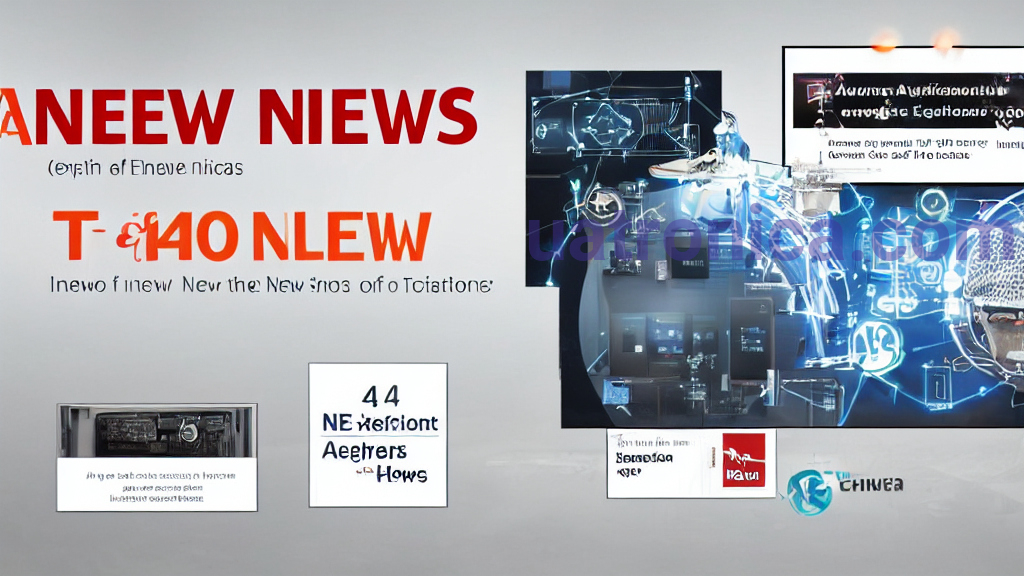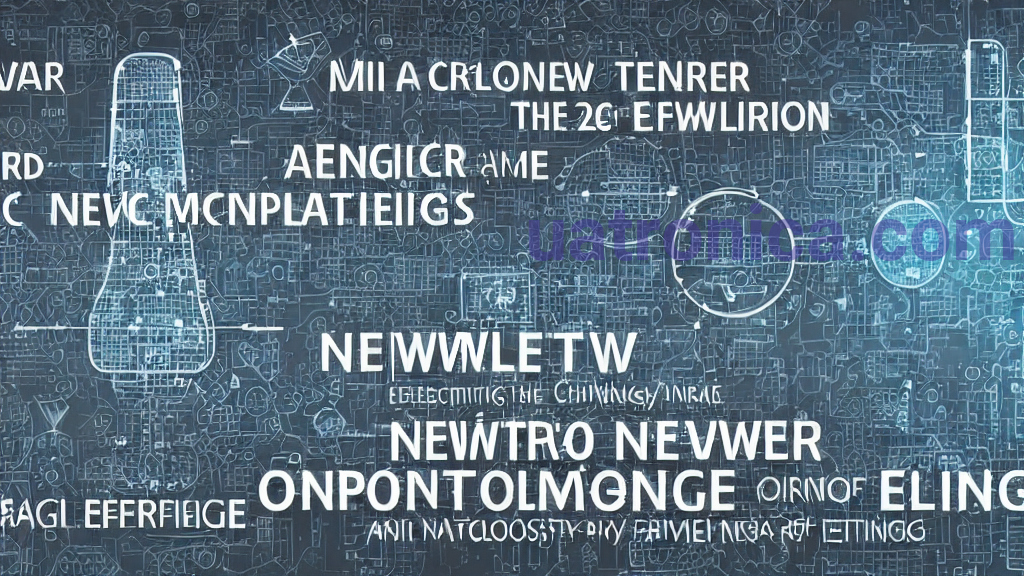14 Defining Technologies That Will Usher in a New Era in Electronics: Expert Predictions and Trends
The modern world of electronics is on the verge of revolutionary changes that promise to fundamentally change our understanding and use of technology. In this context, the concept of "New era of electronics" has become the center of attention for industry specialists. New technologies, gaming trends and innovations appear from afar, redefining all aspects of electronics. This article takes a close look at 14 key technologies shaping the future of electronics, focusing on their features, applications and potential.
1. Continuous development of semiconductors
Semiconductors remain the basis of electronic components. Their constant improvement allows to create more compact and energy-efficient devices. For example, the 3nm technology, which is planned for implementation by 2025, is based on new solutions that allow increasing productivity while reducing energy consumption. Here are some key facts about semiconductor technology:
- Size reduction: The reduction of transistors leads to a higher chip density.
- Reduced energy consumption: New materials such as graphene provide even greater efficiency.
2. Internet of things
The Internet of Things is actively changing the way devices interact. Devices are becoming smarter, able to collect data and automatically respond to changes in the environment. According to forecasts, the number of connected IoT devices will exceed 30 billion by 2030. The growth of IoT is supported by technologies such as 5G, which provides fast and stable connectivity. Key benefits of IoT include:
- Improved process automation.
- Increasing resource efficiency through smart management.
- Collection of analytical data for better decision-making.
3. Augmented reality and virtual reality
AR and VR enable new forms of interactivity and learning. According to forecasts, the market of these technologies will reach a volume of $209.2 billion by 2022. They are used not only in entertainment, but also in medicine, education and production. Key areas of use include:
- Training and simulations: AR and VR can create realistic scenarios for hands-on learning.
- Advertising and sales: Creation of virtual showrooms that allow customers to see products in real time.
4. 5G technologies
5G is not just faster internet. This technology promises to lower latency and improve data rates, opening new horizons for device connectivity and automation in industrial sectors. 5G enables the development of autonomous cars, smart cities and even new forms of telecommunications. Here are some key features of 5G:
| Parameter | 4G | 5G |
|---|---|---|
| Speed | up to 1 Gbit/s | up to 20 Gbit/s |
| Delay | up to 30 ms | less than 5 ms |
| Number of connected devices | up to 1000 per km² | up to 1 million per km² |
5. Artificial intelligence
Artificial intelligence is becoming increasingly integrated into electronics, providing opportunities for self-learning and predictive analysis. AI is used in everything from smartphones to cars, optimizing operations and anticipating user needs. The main directions of using AI in electronics:
- Data processing and analysis in real time.
- Optimization of machine learning processes to improve system efficiency.
- Intelligent automation of home devices.

6. Systems on a crystal
Systems on a crystal allow packing all components in one small chip, which significantly reduces the volume of devices and increases their efficiency. SoC production is becoming the basis for future mobile solutions and the Internet of Things. SoC benefits include:
- Saving space: Compacting of components allows to create smaller devices.
- Speed increase: Reducing the distance between components reduces latency.
- Reduction of production cost: Fewer components reduce costs.
7. Biometric technologies
Biometrics, such as facial recognition and fingerprints, are becoming the security standard. These technologies can reduce fraud risks and improve user experience. With the integration of AI and big data, biometric technology is evolving faster than ever. The main areas of application of biometric identification:
- Financial services to protect transactions.
- Access to personal devices and information.
8. Quart and spin calculation
Moving to new parameters of computing power, quantum and spin computers promise to solve tasks that are inaccessible today. For example, quantum computing can improve efficiency in medicine, cryptography, and artificial intelligence. Key features of these technologies:
- High processing speed: Quantum computers are capable of performing billions of operations simultaneously.
- Application in calculations: Solving complex problems that require a lot of computing power.
9. Andy-i-ist technologies
The use of nanomaterials in electronics opens up new opportunities for reducing the size of components and significantly increasing their efficiency. Nanomaterials, due to their unique properties, are gaining popularity in the production of modern electronic components. Key benefits include:
- Improved electrical properties.
- Reduced weight of components.
10. Intellectual materials
Intelligent materials are able to adapt their properties under the influence of external conditions. This provides new opportunities for creating devices that can independently respond to changes in the environment, such as temperature fluctuations or changes in humidity. Main areas of application:
- Construction: Thanks to intelligent materials, it is possible to reduce the energy consumption of buildings.
- Medicine: The use of intelligent stents in treatment processes.
11. System of operational management of energy consumption

Optimizing energy consumption is becoming a priority for new technologies as global climate change demands effective solutions to conserve resources. Energy management systems help make electronics more efficient by reducing electricity consumption by intelligently monitoring and controlling devices. Principles of efficient energy:
- Automated management of electricity consumption.
- Use of alternative energy sources.
12. Programmable chips
Chips that can reprogram their functionality open new possibilities for electronic devices. This allows companies to adapt their products to new market requirements after their release. Programmable chips provide opportunities:
- Flexibility in the development of new functions.
- Reduction of production costs of new models.
13. Complex security systems
With the development of technology, the threat of cyber attacks is also increasing. Comprehensive security systems based on AI allow detection and prevention of threats in real time. The main functions of such systems:
- Analysis of user behavior to detect anomalies.
- Automated response to cyber threats.
14. New methods of production of electronic components
Electronics manufacturing is evolving with the use of 3D printing and additive technologies. This allows you to reduce costs, time for new product development and environmental pollution. Key benefits include:
- Production speed: Possibility of rapid prototyping.
- Waste reduction: Use only necessary materials.
Expert opinions and forecasts
Experts note that in the next ten years we will be surrounded by a new generation of technologies that are already significantly changing existing paradigms. Each of the described technologies plays an important role in shaping the new era of electronics. Technologies such as AI, 5G and IoT serve as the basis for a greater level of interactivity, security and convenience for users.
For example, the integration of AI in IoT devices is already increasing their efficiency. An example of a successful integration of new technologies is a product available for link, which combines advanced functions for electronic systems. Similarly, this product demonstrates an innovative approach to energy conservation and productivity.
Prospects and challenges
Along with advantages, new technologies also bring certain challenges. In particular, the growing reliance on IoT and AI creates new security and data privacy issues. Companies must find a balance between innovation and consumer protection. Also, for developers, the use of new technologies requires retooling of educational programs and training of highly qualified specialists. But despite the challenges, the new era of electronics offers many opportunities for progress in all areas. Investments in research and development will provide an opportunity to significantly change the industry for the better.
The new era of electronics will directly affect various fields: from health care to entertainment. Experts predict that technologies such as quantum computing and new methods of manufacturing electronics could completely change the way we approach technology. However, despite the emerging challenges, new opportunities for adaptation and growth are on the horizon. Don't forget to visit as well our site for more information on electronic components and new products on the market.
In addition, you can familiarize yourself with research on our website, to delve deeper into the prospects of technologies that await us in the near future.










